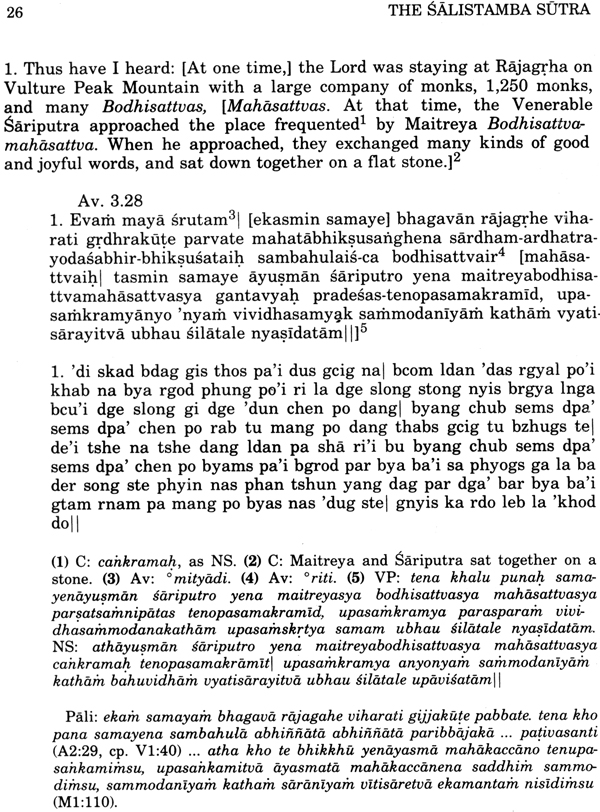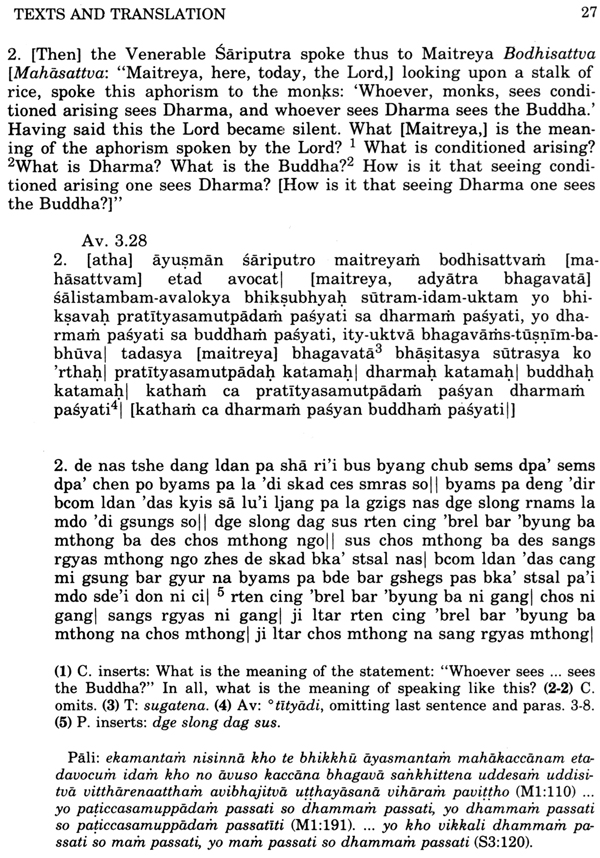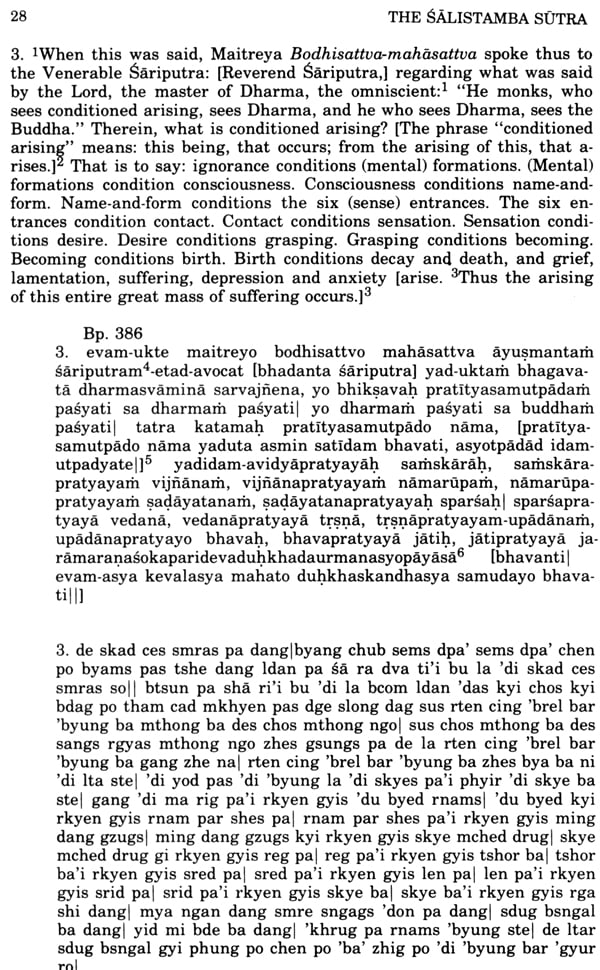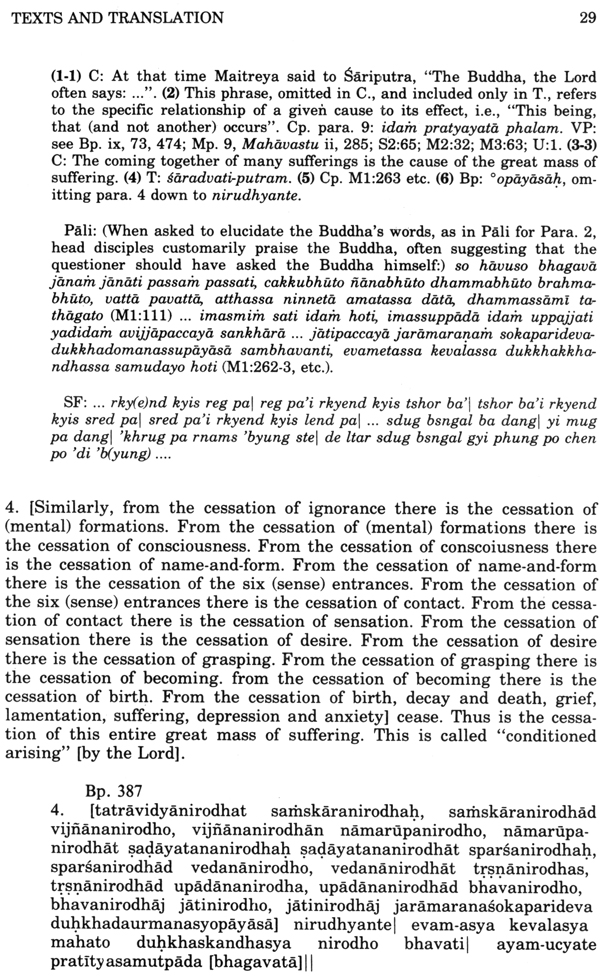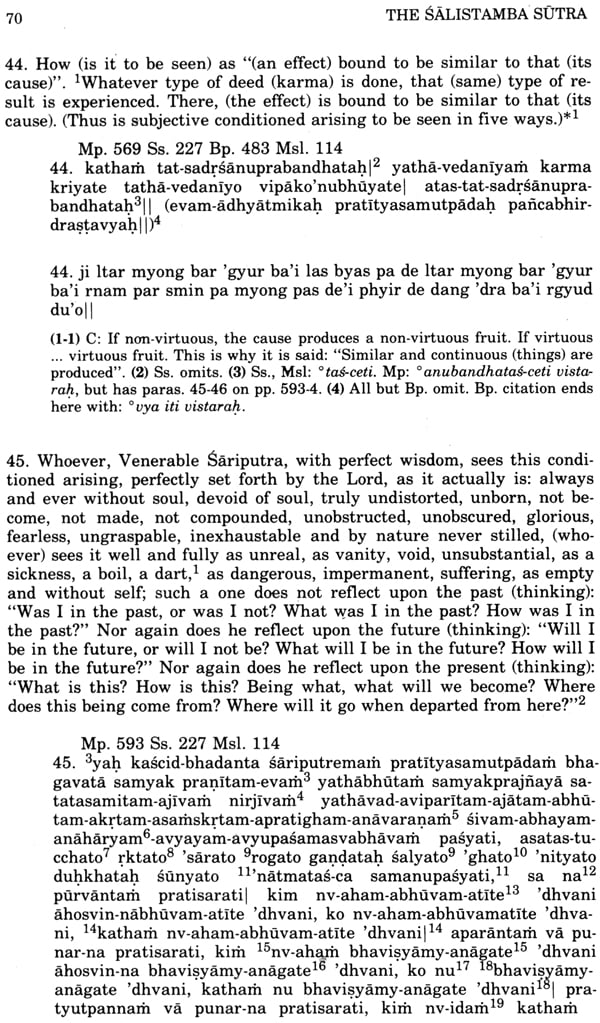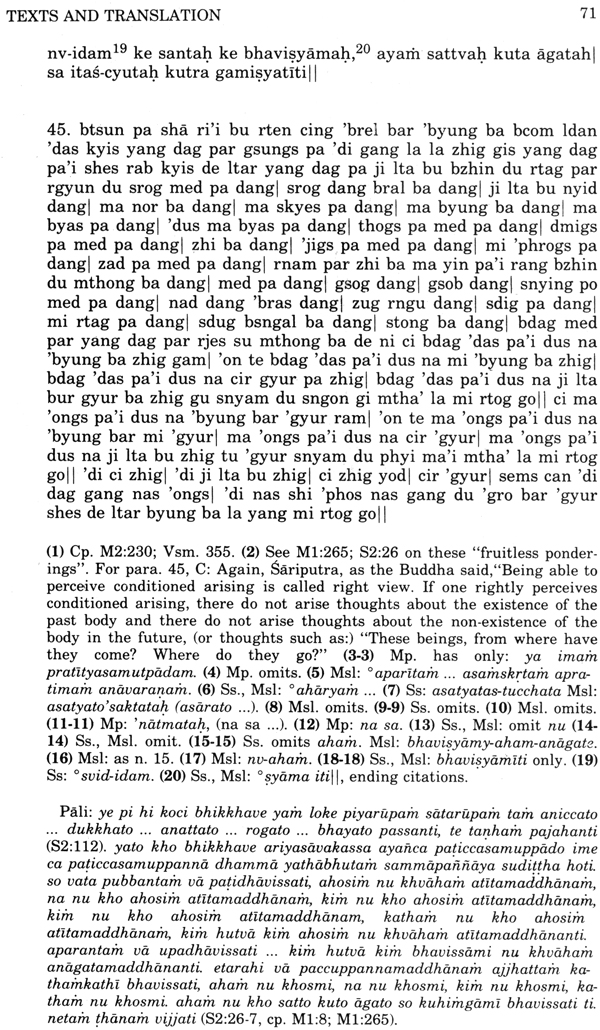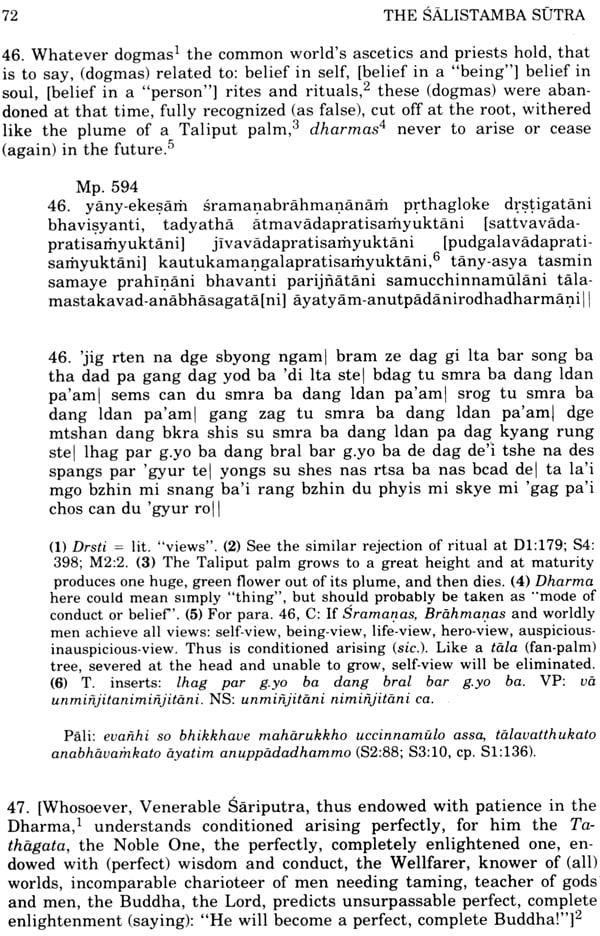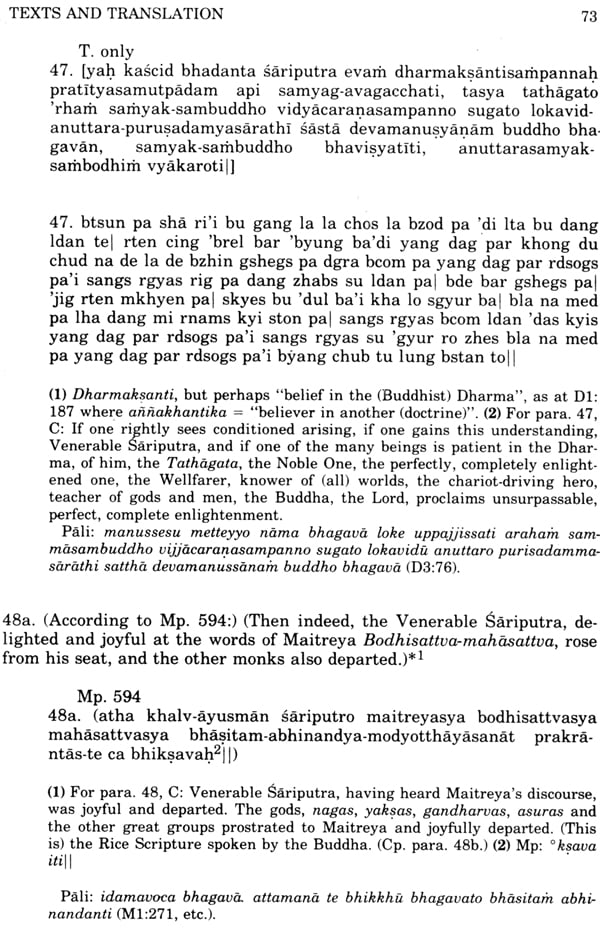
The Salistamba Sutra
Book Specification
| Item Code: | IDC290 |
| Author: | N. Ross Reat |
| Publisher: | Motilal Banarsidass Publishers Pvt. Ltd. |
| Language: | English |
| Edition: | 1993 |
| ISBN: | 9788120811355 |
| Pages: | 87 |
| Cover: | Hardcover |
| Other Details | 9.0" X 5.8" |
| Weight | 320 gm |
Book Description
From the Jacket :
The Salistamba Sutra, a Mahayana text of great antiquity, has perished in its original Sanskrit form. It is, however, extensively quoted in Sanskrit commentarial literature which does survive in the original. Moreover, the Salistamba survives in several Chinese versions and in Tibet, including a seventh century manuscript which represents one of the earliest extant examples of the Tibetan language. As a result, surviving Sanskrit quotations of the Salistamba Sutra can be matched against the Tibetan and Chinese translations of an original Sanskrit version of the text.
The resulting approximation of the Sanskrit text of the sutra is of considerable historical importance with regard to the origins of Mahayana Buddhism and the early history of Buddhism in general. The Salistamba Sutra appears to represent a formative period in which there yet remained many points in common between incipient Mahayana Buddhism and what was to become Theravada Buddhism. This situation suggests a gradual divergence between the two major streams of Buddhism rather than the radial schism depicted in traditional Buddhist history, and provides evidence for the contention that the Theravada suttas do indeed contain the earliest, most accurate version of the teachings of historical Buddha.
About the Author:
N. Ross Reat was born in Texas on September 29, 1951. He did a Bachelor's degree in journalism at Northwestern University before going on to do an M.A. (1974) and Ph.D. (1980) with Ninian Smart at the University of Lancaster. In the course of doing fieldwork for the Ph.D. he spent two years in India and Sri Lanka, studying Pali, Sanskrit and Tibetan. Since that time, he has done further fieldwork in China, Tibet, Japan, Thailand, Burma, Cambodia and Vietnam. During these travels, he was the third Westerner in the later half of this century of reach Khotan, in far western China, the site of M. Aurel Stein's discovery of the ancient Tibetan fragments of the Salistamba Sutra which are included herein.
Dr. Reat is currently Reader in the Department of Studies in Religion, University of Queensland, Australia. Excluding numerous articles, his major works include: A Tibetan Mnemonic Grammar: The Divine Tree, (1982); Origins of Indian Psychology, (1990); A World Theology, co-authored with Edmund F. Perry, (1991) and Buddhism: A History (1994). Dr. Reat is also an editor of Abhidharma Philosophy, of the Encyclopedia of Indian Philosophies, Vol. VII, Princeton University Press, forthcoming.
| Acknowledgments | ix |
| Preface | xi |
| Introduction | 1 |
| Date and Historical Importance of the Sutra | 1 |
| Organization and Content of the Sutra | 5 |
| Structure and Development of the Sutra | 13 |
| European Literature on the Sutras | 15 |
| The Present Edition | 16 |
| Sources and Layout of the Present Edition | 18 |
| Synopsis of Textual Sources | 21 |
| Textual Symbols | 23 |
| Abbreviations | 24 |
| Texts and Translations | 25 |
